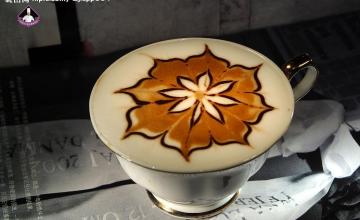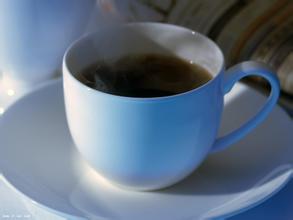Introduction to the characteristics and taste of Peruvian coffee manor with elegant and mild sour taste
After peaceful negotiations between the two sides in 1929, Peru reclaimed the province of Tacona. In 1933, there was a border war with Colombia and the Secret War was defeated. In October 1948, Audrey launched a military coup and came to power. Belaunde Terry of the people's Action Party was elected president in June 1963. On October 3, 1968, Lieutenant General Velasco became president after a coup. General Morales took over power on August 29, 1975 and announced in 1977 that "political power would be returned to the people". In 1980, democratic elections were held to restore the civilian government. From 1990 to 2000, the leader of Reform 90, Fujimori (of Japanese origin), resigned and went into exile in Japan in November 2000. From 2001 to 2006, Toledo, leader of the Peruvian feasible party, served as president. From 2006 to 2011, Garcia, leader of the Apra party, served as president. On July 28, 2011, Humala, chairman of the Nationalist Party, was inaugurated as president. For a five-year term, Mount Coropuna and Mount Salcan are both above 6000 meters above sea level, and Mount Vascalan is 6768 meters above sea level, the highest point in Peru. The main rivers are the Ukayari River and the Putumayo River. The southern part of the central part is volcanic with frequent earthquakes, and Lake Titicaca, which is the second largest lake in South America, lies on the southeast border with Bolivia. The northern part of the center contains oil along the coast and offshore. Offshore waters are rich in fishery resources such as anchovy (Peruvian sardines), and there are a large number of guano layers in the coastal islands. The forest area accounts for 51% of the territorial area, which is called Congress, a unicameral system, composed of 130 members. Members shall be elected for a term of five years.
Peruvian presidential palace
Peruvian presidential palace
Re-elected. Congress has two sessions a year, and the standing Committee presides over the work during the recess. Each Congress has a term of five years. The current Congress was established in July 2011. The current President of Congress, Victor Isla Rojas (Victor ISLA Rojas), took office on July 26, 2012 for an one-year term. Distribution of seats in Congress: 43 seats in the Peruvian Victory Alliance, 36 seats in the 2011 Forces Party, 15 seats in the Peruvian feasible Alliance, 12 seats in the Great change Alliance, 8 seats in the National Unity Alliance, 6 seats in the Congressional Consultative Union (Apra Party, etc.), 10 seats in the people's Action-wide Front Alliance
Peruvian coffee beans are best known for their coffee beans from Chimacha Mayou in the middle and Cusco in the south. In addition, some areas in northern Peru also produce characteristic organic coffee. Organic coffee is made of beans grown in the shade of trees. Although the yield of coffee beans is not high because of the method of planting in the shade, its quality can reach the level of gourmet coffee. This is because shading trees can slow down the maturity of coffee trees, help coffee grow fully, make it contain more natural ingredients, breed better taste, and reduce the content of caffeine as a rising star in the coffee industry. Peruvian coffee is gradually opening up its popularity and entering the world. Peruvian coffee has always been used as one of the stable and mellow mixed beans of comprehensive coffee. Peruvian coffee tastes mellow and has the right acidity. This lukewarm coffee attitude has made more and more people like its ordinary organic Peruvian coffee. Compared with high-quality organic Peruvian coffee, there is a huge difference: relatively cheap beans are not only unimpressive in quality, but also often have obvious defects in the cup. Especially the grass flavor, overfermented flavor. It takes a lot of work to find good Peruvian coffee beans among a lot of middlemen or other people who can buy them. However, it also takes a lot of hard work to pick sample beans. But that's better than working hard in piles of papers. Peru is located in western South America, with a coastline 2254 kilometers long. The Andes runs from north to south, and the mountains account for 1% of the country's area. it belongs to the tropical desert region with a dry and mild climate. Peruvian coffee is mostly grown at the foot of the Andes, where it is rich in traditional Central American top coffee beans. Peruvian coffee is grown in a planned way, which has greatly increased coffee production. Its rich acidity and mellow smoothness are its most prominent features. Peruvian coffee has a soft sour taste, medium texture, good taste and aroma, and is an indispensable ingredient in the production of comprehensive coffee. Peruvian coffee of outstanding quality, with strong aroma, smooth, layered, rich sweet, elegant and mild sour taste, will quietly awaken your taste buds.

Important Notice :
前街咖啡 FrontStreet Coffee has moved to new addredd:
FrontStreet Coffee Address: 315,Donghua East Road,GuangZhou
Tel:020 38364473
- Prev

Introduction to the unique flavor of Indonesian civet coffee flavor and taste of fine coffee in manor area
The male of the cat has a pair of well-developed cystic aromatic glands near the perineum under the anus, and the male opens a pear-shaped sachet between the testis and the penis. There is a longitudinal crest in the front of the inner wall and 3-4 folds on both sides. There are two deep and large depressions on each side, with short hairs on the inner wall; the sachet opened by the female is mostly square, and there is only one in the middle of the inner wall.
- Next

Introduction to the varieties with slightly sour taste in the coffee producing area of Cuba's Crystal Mountain Coffee.
In addition to Cuba, it also includes more than 1600 surrounding islands of different sizes. The islands are made up of five islands: Savannah, Camag ü ey, Colorados, Queen's Garden and Canareos. Youth Island (also known as Pine Island), located in Batahuano Bay, is the only larger island along the coast. The total length of the coastline is 6073 kilometers. Most of the island of Cuba is flat
Related
- Detailed explanation of Jadeite planting Land in Panamanian Jadeite Manor introduction to the grading system of Jadeite competitive bidding, Red bid, Green bid and Rose Summer
- Story of Coffee planting in Brenka region of Costa Rica Stonehenge Manor anaerobic heavy honey treatment of flavor mouth
- What's on the barrel of Blue Mountain Coffee beans?
- Can American coffee also pull flowers? How to use hot American style to pull out a good-looking pattern?
- Can you make a cold extract with coffee beans? What is the right proportion for cold-extracted coffee formula?
- Indonesian PWN Gold Mandrine Coffee Origin Features Flavor How to Chong? Mandolin coffee is American.
- A brief introduction to the flavor characteristics of Brazilian yellow bourbon coffee beans
- What is the effect of different water quality on the flavor of cold-extracted coffee? What kind of water is best for brewing coffee?
- Why do you think of Rose Summer whenever you mention Panamanian coffee?
- Introduction to the characteristics of authentic blue mountain coffee bean producing areas? What is the CIB Coffee Authority in Jamaica?

